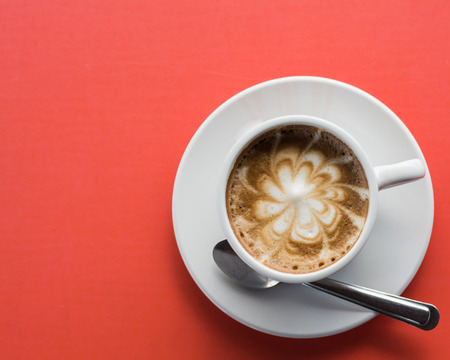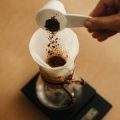1. Introduction: The British Beverage Landscape
Britain’s relationship with its drinks is as storied and nuanced as its class system. From the humble mug of builder’s tea to the refined glass of single malt whisky, the nation’s beverage choices have long mirrored its social divisions and aspirations. Historically, what one drank—and how—offered subtle clues to their place in society, with tea rooms echoing with middle-class conversation and public houses bustling with working-class camaraderie. Today, while much has changed in British society, the interplay between class distinction and beverage preference remains both visible and intriguing. Whether it is the enduring reverence for a proper cup of tea or the growing popularity of artisan coffee and craft gin, each drink tells a story not just of taste but of identity, tradition, and status. In this exploration, we will delve into the traditional staples and contemporary trends that shape Britain’s beverage landscape, setting the scene for a deeper understanding of how class continues to influence what fills the nation’s cups.
2. A Brewed Divide: Tea and Its Social Symbolism
Tea is more than just a beverage in Britain; it is a cultural cornerstone, deeply entwined with ideas of class, tradition, and national identity. Since its introduction to British society in the 17th century, tea has served as both a unifying force and a marker of social distinction. The way tea is consumed—ranging from the fine china of afternoon tea to the humble mug at a builder’s break—speaks volumes about one’s place within the British social hierarchy.
The association between tea and class began when the drink was first imported, as its high cost restricted it to the aristocracy. Over time, increased trade made tea accessible to the middle classes and eventually to working-class households. Nevertheless, subtle indicators still persist in how tea is prepared, served, and discussed. For example, debates over whether milk goes in before or after the tea can act as shorthand for one’s upbringing or social aspirations.
| Class Group | Typical Tea Practices | Social Perceptions |
|---|---|---|
| Upper Class | Afternoon tea with fine china; loose leaf tea; emphasis on etiquette | Elegance, sophistication, tradition |
| Middle Class | Brewed with teabags or loose leaf; often served in mugs or cups; some attention to presentation | Respectability, comfort, aspiration |
| Working Class | Strong builder’s brew; teabags; mugs; practical and quick preparation | No-nonsense attitude, practicality, camaraderie |
The language surrounding tea also reflects its symbolic weight. Phrases such as “put the kettle on” are loaded with meaning—offering reassurance in times of crisis or hospitality in daily life. At the same time, certain rituals like afternoon tea have become emblematic of an idealised upper-class lifestyle. These distinctions reinforce broader social boundaries even as they draw people together under a shared love of tea.
![]()
3. Coffee Culture: From High Streets to Hipsters
The story of coffee in Britain is a fascinating lens through which to examine social status and shifting class boundaries. Originally introduced in the 17th century, coffee houses quickly became meeting points for merchants, politicians, and intellectuals—spaces that catered to the affluent and educated. These early establishments were markers of exclusivity; sipping coffee was as much about one’s social standing as it was about the beverage itself.
Fast forward to the late 20th and early 21st centuries, and coffee underwent a remarkable transformation. The rise of high street chains like Costa, Caffè Nero, and Starbucks democratised access to what had once been a symbol of sophistication. Suddenly, a flat white or an Americano was available to anyone with a few pounds to spare. The proliferation of these chains blurred class lines, but subtle distinctions remained: while some preferred the reliability of well-known brands, others sought out independent cafés with artisanal brews—a new marker of cultural capital among urban professionals.
This evolution has also seen the emergence of “hipster” coffee culture, where single-origin beans, latte art, and pour-over methods signal not just taste but also values such as sustainability and authenticity. For many young Britons, particularly in metropolitan areas like London or Manchester, choosing a small-batch roast over instant coffee is both a personal preference and a social statement. These choices can reflect aspirations towards cosmopolitanism or a conscious distancing from mass-market consumption—echoing age-old themes of class distinction through everyday rituals.
4. Public Houses and Posh Pints
The British drinking landscape is a microcosm of the nation’s class system, where one’s choice of watering hole and beverage can signal their social standing as clearly as their accent or address. From the humble ‘local’ pub to the most exclusive cocktail bars in London, alcohol consumption is layered with subtle (and sometimes not-so-subtle) markers of class distinction.
Traditional Locals: The Heartbeat of Working-Class Britain
For generations, the ‘local’ pub has served as both a social hub and a cultural institution, particularly for working-class communities. Here, pints of ale or lager are typically preferred over fancy cocktails or imported wines. The décor tends to be unpretentious, conversation flows easily, and regulars are known by name. The local pub represents familiarity and continuity—a space where hierarchy is flattened, at least on the surface.
Gastropubs and Cocktail Bars: The Rise of Middle-Class Drinking Culture
In contrast, gastropubs and trendy cocktail bars have emerged alongside Britain’s evolving middle class. These establishments often emphasise artisanal ingredients, curated drinks menus, and Instagram-worthy interiors. Ordering an espresso martini or craft IPA in such settings is not just about taste—it’s also a performance of cultural capital. The clientele may be more transient or aspirational, with patrons keenly aware of the image their drink choices project.
Beverage Preferences Across Social Venues
| Venue Type | Typical Clientele | Popular Beverages | Atmosphere |
|---|---|---|---|
| Traditional Local Pub | Working-class, older regulars | Bitter, lager, cider | Relaxed, familiar, communal |
| Gastropub | Middle-class professionals, families | Craft beers, wine, premium gin & tonic | Upmarket but casual, food-focused |
| Cocktail Bar | Younger professionals, affluent urbanites | Cocktails, prosecco, imported spirits | Trendy, lively, design-led |
| Members’ Club Bar | Upper-class, elite networks | Champagne, rare whiskies, bespoke cocktails | Exclusive, formal or discreetly luxurious |
The Evolving Social Signals of Drinking Habits
This landscape is not static; social mobility and changing tastes mean that boundaries are continually being negotiated. What was once considered “posh”—such as sipping a G&T—has become more mainstream thanks to clever marketing and shifting trends. Still, the venues we choose and the drinks we order remain potent signals in Britain’s ongoing story of class and cup.
5. Beverage Brands and Class Codes
Across Britain, beverage brands carry nuanced signals about class and social standing. The choice between a builder’s brew and an artisanal loose-leaf tea, or between instant coffee and a specialty single-origin blend, is often shaped by complex associations of status, taste, and aspiration. Advertising plays a pivotal role in crafting these associations; for instance, traditional brands like PG Tips or Tetley are often marketed as everyday staples, subtly reinforcing their connection to working-class identity. In contrast, brands such as Fortnum & Mason or Whittard evoke images of heritage, exclusivity, and upper-middle-class refinement.
Pricing further cements these divides. Premium teas and coffees—marketed with descriptors like “hand-picked,” “organic,” or “ethically sourced”—often command higher prices and are stocked in upmarket retailers. These drinks become markers of connoisseurship and disposable income. Even within the world of alcoholic beverages, choices signal class: a pint of lager at the local Wetherspoons versus a glass of English sparkling wine in a boutique bar reflect differing economic realities and cultural capital.
Advertising campaigns have historically amplified these distinctions. For example, tea adverts from the mid-20th century frequently depicted nuclear families enjoying budget-friendly brews around the kitchen table—a deliberate nod to working-class respectability. Meanwhile, modern campaigns for craft gins or cold brew coffees often target urban professionals with imagery of minimalist interiors and curated lifestyles.
The result is a beverage landscape where consumption is not just about taste but about signalling belonging—or aspiration—to particular social groups. This extends beyond personal identity to public settings: offering guests Yorkshire Tea may suggest down-to-earth hospitality, while serving a rare Darjeeling might be read as a performance of sophistication. Thus, every cup poured becomes part of Britain’s ongoing conversation about class and culture.
6. Changing Tastes: Class Fluidity and Modern Britain
The landscape of British beverage culture has experienced considerable transformation in recent decades, revealing the evolving nature of class boundaries and identity. Immigration, globalisation, and generational shifts are all contributing to a more fluid relationship between social status and beverage choice, challenging long-held assumptions about what Britons drink and why.
Immigration’s Influence on the British Palate
The post-war period saw significant waves of immigration from South Asia, the Caribbean, Africa, and Eastern Europe. These communities have brought with them not only new ingredients but also distinct beverage traditions. Chai, Turkish coffee, bubble tea, and Polish vodka have moved from niche ethnic enclaves into mainstream high streets. These drinks are increasingly enjoyed across class lines, symbolising both diversity and a willingness to experiment beyond traditional British fare.
Globalisation: The World in a Cup
Global brands and international travel have further eroded the rigid association between class and specific beverages. Once, a cappuccino or a flat white might have marked someone as cosmopolitan or middle-class; now these are commonplace in chain coffee shops from Aberdeen to Exeter. Supermarkets stock everything from Japanese matcha to Argentine yerba mate, reflecting an openness to global tastes that transcends social background.
Generational Change and New Attitudes
Perhaps most striking is the way younger generations approach beverage choices. Millennials and Gen Z are less likely to see drinks as markers of fixed class identity. Artisanal soft drinks, craft beers, natural wines—these preferences often reflect values such as sustainability or local sourcing rather than social aspiration alone. Moreover, the rise of alcohol-free alternatives is blurring old distinctions between “pub culture” and teetotalism, further loosening the grip of class-based expectations.
The Blending of Boundaries
These changes do not mean that class no longer matters in British society—but they do suggest that taste is becoming less predictable as an indicator of status. The lines between “posh” and “common,” once so sharply drawn around what one drank at breakfast or after work, are now increasingly blurred. In this climate of change, the cup becomes not just a symbol of where one comes from but also a space for forging new identities and connections across traditional divides.
7. Conclusion: The Ongoing Conversation in a Cup
Britain’s drink habits are far more than matters of personal taste—they represent a living record of class identity, social mobility, and cultural negotiation. Whether it’s the quiet comfort of a morning cuppa, the ritual of afternoon tea, or the camaraderie found in the local pub over a pint, each beverage reflects layers of history and unspoken rules about status, belonging, and aspiration. These rituals may seem quaint on the surface, but they are deeply embedded in the British psyche, helping to define who belongs where and why.
Yet as Britain continues to evolve—a nation shaped by immigration, globalisation, and shifting economic fortunes—the boundaries between “posh” and “common” drinks are blurring. Coffee culture has muscled in alongside tea; craft beer is as likely to be found in a working men’s club as in a trendy London bar; even non-alcoholic and health-conscious options are redefining what it means to socialise or take a break. These changes suggest that while class distinctions remain, they are no longer set in stone, but instead are subject to reinterpretation with every new generation.
Looking ahead, the future of Britain’s drinking culture will likely continue to reflect its complex relationship with class—sometimes reinforcing old divisions, sometimes challenging them. The cup, whether filled with builder’s tea or artisan flat white, remains both a mirror and a medium for this ongoing national conversation. As tastes change and new influences arrive from abroad and at home, one thing is certain: what Britons choose to drink will always say something about who they are, where they’ve come from, and where they hope to go next.


